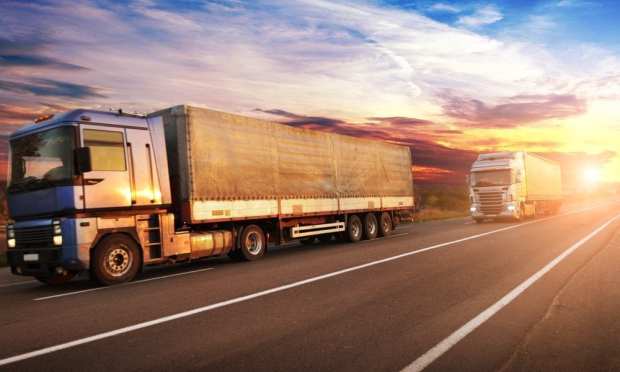The Connected Car’s Future Sits Behind The Wheel Of 18-Wheelers Today

This summer, when on the road, take a fresh look at that tractor-trailer in the next lane. Not only does that vehicle have a role in shipping and trade, but there’s a decent chance that the future of digital commerce and payments is playing out in the driver’s cab.
PYMNTS readers likely know about the historic opportunities offered by connected and (eventually) autonomous vehicles. Research by PYMNTS, after all, has found that drivers already power some $230 billion worth of commerce — an amount that promises to increase as more sophisticated car technologies hit the road in the coming years.
However, as Stefan Heck, CEO of fleet safety technology provider Nauto, discussed during a recent PYMNTS interview, much more is going on in the service of constructing that ecosystem — including artificial intelligence (AI) technology inside those cabs.
“Our mission is to make driving safer and smarter,” he told Karen Webster.
Safety Role
That might sound like PR mush, but think about it: Without proven safety benefits, the technology powering connected vehicles — and the technology that will power autonomous cars and trucks — might face even more challenges in winning mainstream acceptance, and in persuading human beings to give over more of their lives to software and other machinery. Safety is the foundation for the retail and payment aspects, which will grow as part of the connected car ecosystem. Without a strong showing of safety, it’s hard to imagine how autonomous vehicles will win quick mainstream acceptance.
It also pays to bring those safety benefits to commercial vehicles. They might account for only about 10 percent of all vehicles on the road, Heck said, but half the mileage is being driven by commercial drivers. In addition, the insurance for such vehicles is steep, running from about $3,000 to $12,000 per year. Another factor is the ongoing shortage of commercial drivers, which is forcing existing drivers to push the limits of federally mandated, allowable driving hours.
All of that provides ample opportunity for the type of safety technology sold by the likes of Nauto.
The real-time technology is designed to monitor road conditions and hazards, and to provide voice and other sound alerts when the software and monitors determine that the driver is or might be distracted. Drivers are still in charge of operating the vehicle — this is not autonomous driving technology, though it is easy to imagine how those lessons learned and data analyzed could further self-driving efforts, and otherwise influence the development of new automotive technologies and processes.
Loss Reductions
So far, according to Heck, the technology has reduced losses by more than 50 percent, and driver distractions by about 70 percent. Though drivers are loath to admit on accident reports that they were distracted, analysis has shown that distraction is an “A or B factor” in most accidents involving commercial vehicles (remember those high insurance rates, and how much they cost fleet owners).
“Nobody admits they [were] distracted until they go to court,” he said.
With the coming of 5G mobile network technology, and the much faster communication speeds it will deliver compared to 4G, such a system could take on more of a crowdsourced feel, with information about road conditions and hazards sent back in real time (and automatically) by drivers 10 to 15 minutes ahead. That, too, can serve as another big step toward a more connected car ecosystem, and the mainstream acceptance, at some point, of autonomous cars and trucks, Heck noted.
As it stands now, the technology already offers about “half the benefits of automation,” he added, predicting that autonomous vehicle technology for the masses still remains at least a decade out.
Better Drivers
Such technology — the gear and software now inside the cab — can teach drivers to be better at their jobs by getting them out of the habit of being distracted by paperwork, mobile communications or whatever else serves to take their eyes away from the road. “A lot of drivers can be good, but aren’t,” Heck said — and helping them improve benefits other drivers, of course, as well as keeps insurance rates down. “Our system is a second pair of eyes.”
Indeed, according to Heck, such technology has reduced the average number of distractions among commercial drivers to about zero to 0.5 per hour, down from five to 15. “It can exonerate good drivers, too,” he said, by providing digital records of accidents.
Massive changes are underway in driving, and those changes promise to provide various types of boosts to payments and commerce. For now, much of that early, significant progress is taking place inside those drivers’ cabs, and might help make the highways a safer place this summer.
